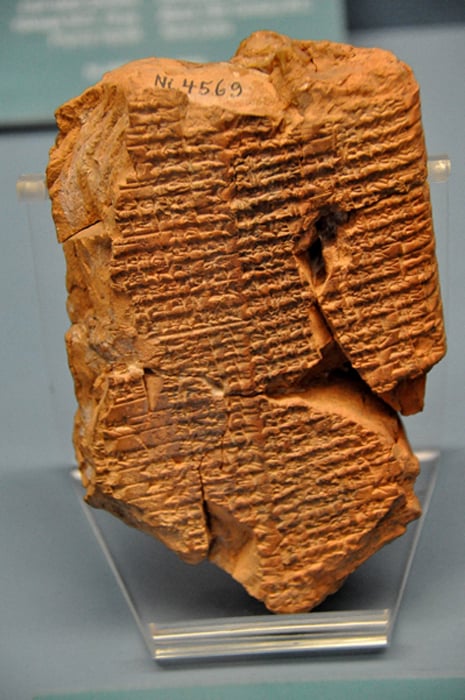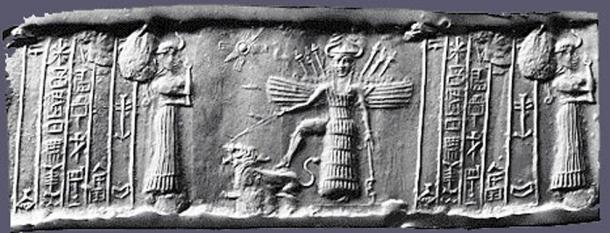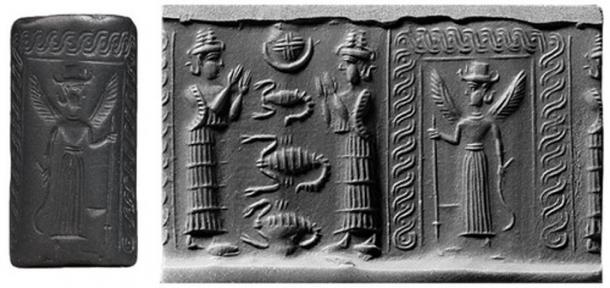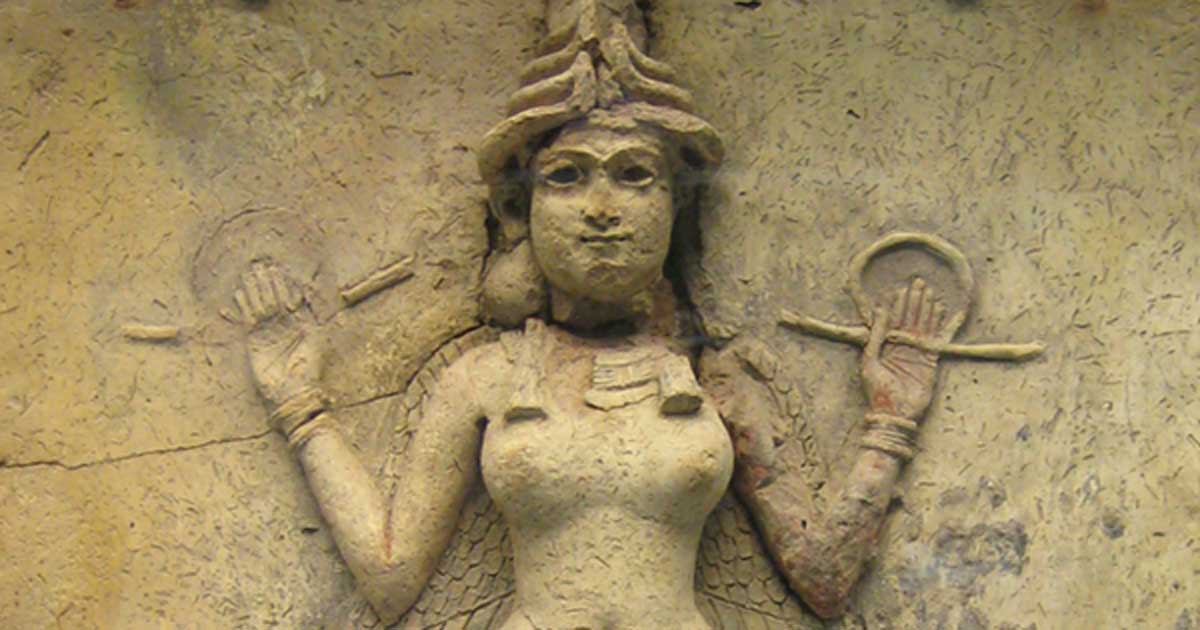The Descent of Inanna into the Underworld: A 5,500-Year-Old Literary Masterpiece
The Descent of Inanna (known also as ‘Inanna’s Descent to the Netherworld / Underworld’) is a piece of work in the literary corpus of ancient Mesopotamia. This story, which was originally written in cuneiform and inscribed on clay tablets, is in the form of a poem. The Descent of Inanna tells of the eponymous heroine’s journey to the Underworld to visit / to challenge the power of her recently widowed sister, Ereshkigal. The poem is thought to be imbued with meaning and symbolism, and various interpretations have been attached to it.
Goddess of Sex and War
Inanna is a goddess in Sumerian mythology, and is known also as Ishtar in the Akkadian pantheon. She is regarded as one of the most important deities of the Mesopotamian pantheon, and is known primarily as a goddess of sexual love, though she is also has the reputation of being a goddess of war. Inanna is said to be the most complex Mesopotamian deity, as she possesses attributes that seem to contradict each other. At times, she is portrayed as a young girl under patriarchal authority, though at others, she is depicted as an ambitious figure who seeks to expand her own sphere of influence. This latter trait is said to be visible in the Descent of Inanna.

Ishtar/Inanna as a warrior presenting captives to the king ( public domain )
Among the World’s Oldest Poems
The Descent of Inanna is thought to have been composed at some point of time between 3500 B.C. and 1900 B.C., though it has been suggested that it may have been created at an even earlier date. This poem contains 415 lines, and, by comparison, the Babylonian Ishtar’s Descent is told in 145 lines. It has been suggested that the difference was due to the influence of patriarchy, which diminished the power and importance of this goddess during the 2 nd millennium B.C.

This terracotta cuneiform tablet is about the myth of “Inanna prefers the farmer.” In this myth, Enkimdu (the god of farming) and Dumuzi (the god of food and vegetation) tried to win the hand of the goddess Inanna. ( CC by SA )
The Descent of Inanna begins with the following lines, “From the great heaven she set her mind on the great below. From the great heaven the goddess set her mind on the great below. From the great heaven Inana set her mind on the great below. My mistress abandoned heaven, abandoned earth, and descended to the underworld. Inana abandoned heaven, abandoned earth, and descended to the underworld.” One explanation for Inanna’s interest in the Underworld is that she hopes to extend her power into that realm, whose queen is her sister, Ereshkigal.
When she arrives at the gates of the Underworld, Inanna informs the gatekeeper, Neti, that she has come to witness the funeral rites of Gugalanna, the Bull of Heaven, who is also Ereshkigal’s husband. When Ereshkigal receives this news, she is not at all pleased, and ordered that the seven gates of the Underworld be bolted against her sister. Inanna is only allowed to pass one gate at a time, and before each gate, she is required to remove a piece of her royal garment.

Cylinder seal depicting the descent of Inanna. Credit: The Oriental Institute, University of Chicago)
By the time Inanna reaches the throne room of Ereshkigal, she had been stripped naked, and was powerless. Ereshkigal overpowered her sister, who was “turned into a corpse” and “hung on a hook”. Prior to entering the Underworld, Inanna had instructed her servant Ninshubur on how to come to her aid should she fail to return at the expected time. This, Ninshubur went to the god Enki, Inanna’s father, for help. Whilst Inanna was successfully revived by the servants sent by her father, she is unable to leave the Underworld as easily as she entered it.

Ereshkigal, Queen of the Nether World ( mesopotamiangods)
A substitute had to be found, and Enki’s servants tried to take several of Inanna’s followers, though the goddess stops them from doing so, as they were all mourning for her supposed death. In the end, Inanna encounters Dumuzi, her husband, who is clearly not in mourning, as he was “clothed in a magnificent garment and seated magnificently on a throne”. This infuriated Inanna, who ordered him to be seized.
Dumuzi prays to Utu, the sun god, to save him, and is transformed into a snake. Nevertheless, he is captured in his attempt to escape, and is brought to the Underworld. Geshtinanna, Dumuzi’s sister, volunteers to be her brother’s substitute, and in the end, it was decided that Dumuzi and his sister would each spend half the year in the Underworld. Like the Greek myth of Persephone and Demeter, this event is used to explain the changing of the seasons.
Related Post
A shocking documentary proves that mermaids do exist
SHOCKING Revelation: Thuya, Mother of Queen Tiye, Was the Grandmother of Akhenaten and Tutankhamun—What Ancient Egyptian Secrets Did She Leave Behind?
Breaking News: Astonishing Discoveries at Karahan Tepe Confirm an Extraterrestrial Civilization is Hiding on Earth, and NO ONE Knows!
Breaking News: Researchers FINALLY Discover U.S. Navy Flight 19 After 75 Years Lost in the Bermuda Triangle!
NASA’s Secret Investigation: Uncovering the Astonishing Mystery of the UFO Crash on the Mountain!
Explosive UFO Docs LEAKED: Startling Proof That Aliens Ruled Ancient Egypt!
